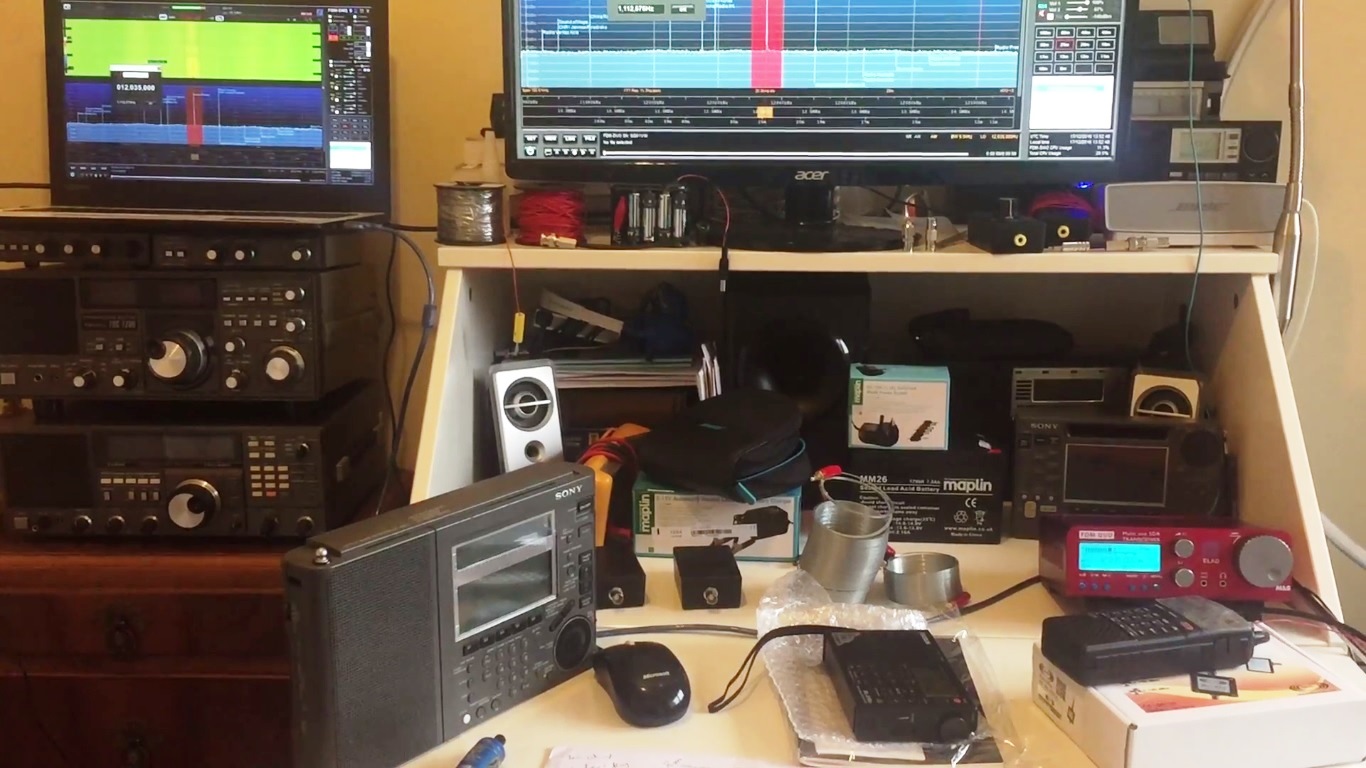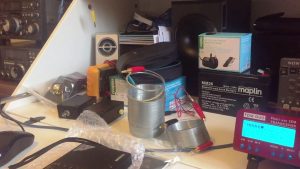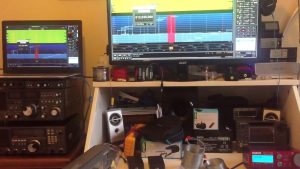Someone recently described my shack in Oxford as ‘an impressive mess’…. and that really is just about the most positive comment I’ve ever received regarding my listening post! So, my apologies for displaying the mess in public, but in response to having been asked many times by subscribers to Oxford Shortwave Log to ‘share my shack’, here it is, well most of it at least, in all it’s unadulterated glory.
The primary reason however for this post is to share my most recent transatlantic medium wave catches using the brilliant Elad FDM DUO and Wellbrook ALA1530 magnetic loop antenna. This excellent combination continues to pull in really nice DX, although not so much very recently as propagation has been fairly rubbish. However, since early to mid December, the dynamic duo have managed to pull in a number of transatlantic medium wave signals, including Radio Rebelde, Cuba on (670 and 710 kHz), KVNS Texas, CHIN Radio, Toronto, WFED Washington DC, WWNN Health and Wealth Radio, Pompano Beach, Florida, and huge signals from WMEX Boston and WWKB Buffalo, New York. Embedded reception videos and text links follow below and in the mean time, I wish you all great DX!
Clint Gouveia is the author of this post and a regular contributor to the SWLing Post. Clint actively publishes videos of his shortwave radio excursions on his YouTube channel: Oxford Shortwave Log. Clint is based in Oxfordshire, England.




Hi Thomas, thanks. The FDM DUO as a standalone receiver is at least as sensitive as my Sony ICF-200D psuedo table top (I say that because it’s large) and both Yaesu FRGs, but with a far lower noise-floor. It hears the same stuff, but the SNR is nearly always superior. As regards selectivity, the FDM DUO in standalone mode superior to all of them and operating via the FDM – SW2 software is hugely more selective with the myriad of filtering and signal conditioning options available. The reason I bought the Elad in the first place was simply because I wanted a full SDR receiver that could also be used in the traditional sense – and only the Elad fully offered this functionality at the time. As regards other SDRs, I have the NooElec RTL-SDR with Ham-it-up upconverter. It’s quite sensitive with a longwire or ALA1530 and capable of, for example, pulling in low-power South American broadcast stations. However, it’s nowhere near as sensitive as the Elad and the audio fidelity is pretty horrendous on my Macbook Pro, with clipping issues that, for whatever reason, can’t be effectively adjusted out. I guess I would recommend an RTL-SDR when starting out, but for serious DXing, you need something with a little more under the hood so-to-speak. It’s my understanding that ultimately, the Perseus marginally out-performs the Elad, but at a higher purchase price. If regarded as a function of performance over cost, the Elad must be hard to beat and I would always strongly recommend it.
Thanks for your insight, Clint! Spec-wise, the DUO also looks very good on paper. The ARRL gave it a very favorable review last year as well. I have the FDM-S2 and believe it’s an amazing little SDR. Elad now makes an outboard filter box for the FDM-S2 which essentially brings it up to the performance of the FDM-DUO (receiver-wise). To have the full SDR in one portable box, though? That’s where the DUO wins as you indicate!
Wow–Clint! Thanks for sharing!
You’ve got some kit to be proud of–some of the best of the best, in my opinion!
Sometime I’d love to hear your thoughts on the FDM-DUO as compared with any other SDRs or tabletop sets you’ve used. I’ve a friend who’s primarily an SWL, but also a ham, and is eyeing one.
-Thomas